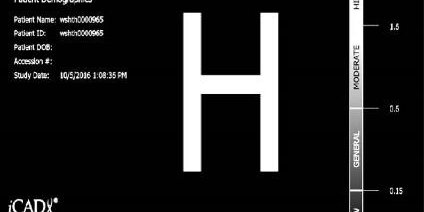
In this nested case-control retrospective study, the ProFound AI Risk from iCAD was used to investigate the predictive performance of an image-derived AI-based risk model in four European screening populations in three countries (Italy, Spain, Germany). A total of 739 breast cancers and 7812 controls were included in this validation study. The study confirmed that the AI-based risk model generalizes across these European screening populations, with AUCs consistently 0.7 or higher when estimating the discriminatory performance of the model for each population. Additionally, it demonstrated that the AI-based risk assessment predicts later stage breast cancers in women who are at high risk of breast cancer, before or at the next screen, and are sent home with a negative mammogram. Similar results were seen in women with fatty and dense breasts. The study contributes to increase the evidence necessary to enable clinical trials aimed at exploring the integration of risk-based screening strategies into European screening programs.
Read full study
Abstract
Background
Image-derived artificial intelligence (AI)-based risk models for breast cancer have shown high discriminatory performances compared with clinical risk models based on family history and lifestyle factors. However, little is known about their generalizability across European screening settings. We therefore investigated the discriminatory performances of an AI-based risk model in European screening settings.
Methods
Using four European screening populations in three countries (Italy, Spain, Germany) screened between 2009 and 2020 for women aged 45-69, we performed a nested case-control study to assess the predictive performance of an AI-based risk model. In total, 739 women with incident breast cancers were included together with 7812 controls matched on year of study-entry. Mammographic features (density, microcalcifications, masses, left-right breast asymmetries of these features) were extracted using AI from negative digital mammograms at study-entry. Two-year absolute risks of breast cancer were predicted and assessed after two years of follow-up. Adjusted risk stratification performance metrics were reported per clinical guidelines.
Findings
The overall adjusted Area Under the receiver operating characteristic Curve (aAUC) of the AI risk model was 0.72 (95% CI 0.70-0.75) for breast cancers developed in four screening populations. In the 6.2% [529/8551] of women at high risk using the National Institute of Health and Care Excellence (NICE) guidelines thresholds, cancers were more likely diagnosed after 2 years follow-up, risk-ratio (RR) 6.7 (95% CI 5.6-8.0), compared with the 69% [5907/8551] of women classified at general risk by the model. Similar risk-ratios were observed across levels of mammographic density.
Interpretation
The AI risk model showed generalizable discriminatory performances across European populations and, predicted ∼30% of clinically relevant stage 2 and higher breast cancers in ∼6% of high-risk women who were sent home with a negative mammogram. Similar results were seen in women with fatty and dense breasts.ProFound AI Risk